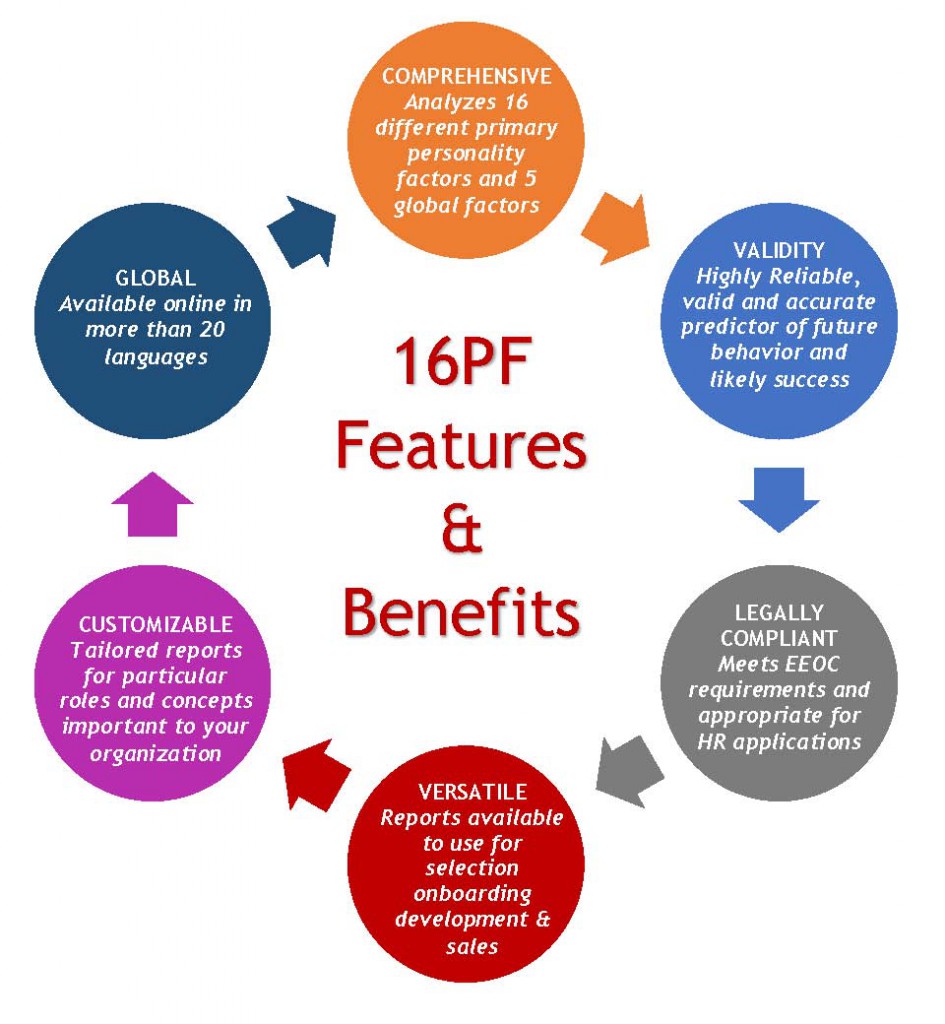OUR APPROACH
Guess or Assess – Exploring Assessments
We have found successful companies share a common trait. They understand that it’s all about people: hiring, promoting and retaining the right people and providing the resources and development opportunities so they can excel in their roles and move up the ladder.
The biggest challenge organizations face is how to identify the right people. There are a number of unknowns such as: how will individuals perform in specific roles, where are their gaps, what is their potential? Sometimes you don’t have all the answers you need.
Why We Hire…
Traditionally we hire for the reasons listed here.
But does this reveal the whole picture?
Experience
Education
Technical Skills
Personal Chemistry
Why We Fire…
When you look at the reasons why we fire it is clear there needs to be a method to uncover these problems up front.
Unacceptable Behavior
Lack of Interpersonal Skills
Low Self Control
Poor Performance
How Do Assessments Improve Your Bottom Line?
Evaluate the right behaviors for the role
Screen in the best candidates
Make better hiring and staffing decisions
Improve productivity and performance
Coach and develop more effectively
Promote and build a robust leadership pipeline
Reduce turnover and increase longevity
Improve morale

Assessments are a KEY component in evaluating and understating people’s behavior and play an integral part in assessing and developing leaders. The right assessments can reveal how people cope with problems, their level of emotional resolve, their level of self-awareness and their level of emotional intelligence. Assessments can also be used to understand the depth of a person’s critical thinking skills and problem-solving ability.
The insight about an individual’s personality, behavior, emotional intelligence and critical thinking skills is vital. Integrating objective assessment data into your talent management process provides important information that often can’t be uncovered by traditional means. Sometimes problematic behaviors don’t emerge for 3-6 months after the initial hire date. Sometimes they don’t emerge until someone is promoted to a higher level position within the company.
Our assessment process provides objective data to supplement what you are already doing and confirm your thoughts and ideas.
It can uncover behaviors or areas that may be red flags which you need to investigate further before making a decision.
We can show you how to take a deeper dive into personality behavior, emotional intelligence and critical thinking skills, to help determine job fit, find out the answers to performance potential questions and more. With the proper assessments you can have a higher probability to predict outcomes. Why gamble with your most valuable asset?
The 16PF Questionnaire
The 16PF Questionnaire is a unique tool that enables you to reliably pinpoint personal qualities that influence behavior in the workplace. It provides a greater ability to predict an individual’s performance potential in a given role and uncover development needs as well as evaluate capacity to handle greater responsibilities in the future.
“When I began my practice 27+ years ago, I discovered my clients had a need to learn more about their people. As a result, I started searching for an assessment tool that would fill that need. I evaluated and sampled many assessments on the market. After much research and a lot of questions, I picked the 16PF because of the depth it offered as a psychological instrument, the years of research and development behind it and its reliability and validity. Today, it is still my instrument of choice.” ~Rick Tiemann
Our assessment process focuses on using the 16PF Personality Questionnaire as our main assessment tool. The 16PF is one of the most widely used, statistically validated psychological assessments on the market today. The results of the 16PF are based on the “Big Five” model of personality, a predominantly-accepted model for other psychological assessments as well.
The 16PF provides a two-tiered system that measures five Global Factors for a useful first glance at an individual’s characteristics and traits before looking more in-depth at the 16PF Primary Factors which provide a deeper explanation for predicting behavior and performance.
The five global factors measure drive and influence, social and interpersonal skills, self-control (a person’s work habits and work ethics), practicality and thinking style, and emotional resilience. The last two areas, practicality and emotional resilience are unique to the 16PF and not found on any of the other basic assessments.
Also, unique to the 16PF is a section that explores a person’s level of reasoning and problem-solving skills. Therefore, in one self-contained assessment you have very specific measures of personality traits and general mental ability.

For higher level positions we blend in other assessments and utilize a battery of assessments for greater depth of information. The right combination of assessments will identify specific behavior dimensions as well as critical thinking skills, revealing cognitive style, problem solving ability, energy level, motivations, workplace coping skills, self-control, drive and independence and interpersonal skills.
We help you select a battery of assessments and which report will do the best job of linking the data to the role for sound decisions throughout the life cycle of your talent management process. All reports provide information about strengths, weaknesses and areas of development in a language relevant to the situation and position.
Ranging from entry level or supervisory, administrative, technical or managerial, our reports can provide the necessary information to reliably predict an individual’s behavior and performance potential.
The following interpretive reports are useful in a variety of applications from selection/intervention/promotion decisions to personal and professional development planning and succession planning:
- The Personnel Report (PR)
- The Customer Service Report (CSPR)
- The Sales Interview Report (SIR)
- The Manager Personnel Report (MPR)
- Onboarding Report (OBR)
- Sales Development Report (SDR)
- Manager Development Report (MDR)
- The Technician Interview Report (TIR)

Frequently Asked Questions
Why should my company use assessments?
Our clients are companies who strongly believe that people and their performance are vital to their success. When companies feel that people really do make a difference, the decisions about those people become especially important. The high cost of turnover is yet another reason companies must understand the capabilities, strengths and weaknesses of the people they hire and retain.
What will be learned from assessments?
Too often, hiring is based on “I know a good one when I see one.” And “I’m a pretty good judge of character.” Or, the resume is taken at face value, the reference check only confirms employment, and the interview lacks an open-ended discussion of successes and challenges in previous roles.
We provide an objective assessment of the capabilities and competencies of potential candidates as well as existing employees to gauge their performance potential for their new role or future roles in your company. From the shop floor to the Executive suite, our goal is to provide information to help you make sound hiring and promotion decisions.
Assessments provide valuable information to consider during the hiring process and beyond. Can the individual handle the position? Are there gaps and if so, can they be trained? Do the behaviors revealed through the assessment process match those necessary for success at the position?
Included with the other information, assessments become a part of a balanced scorecard approach to determine if your candidate is a good fit for the job. It is a valuable source of information about performance potential throughout the life cycle of the talent management process.
What type of information will be received?
The input we provide our client companies depends on the client and the nature of the position under consideration. In general our reports provide an overall opinion about a candidate’s general fit for a position. The other is a detailed behavioral profile of the candidate’s motivations and behavior as they relate to the duties and functions of the job. Our goal is to paint a detailed portrait of an individual to determine the fit between the candidate and a given job within the organization.
Note: It is important to understand that we are not the final employment decision makers. We do not make any estimate of an individual’s functional skills or expertise or product knowledge. Our clients alone decide whom to hire or promote, or what job changes, if any, should be implemented.
How do we get started?
We start with an interview. Clearly understanding what our clients’ objectives are allows us to customize a strategy unique to their needs, their culture and their budget. Our objective is to tailor the assessment(s) to the complexity and demands of the position. For larger roles we may suggest a battery of assessments to supplement the 16PF with other methods.
Reports
We help you select which assessment(s) and report(s) will do the best job to link the data to the role and aid in making sound hiring, promotion or developmental decisions. All reports provide information about strengths and weaknesses in a language relevant to the situation and positions.
Once the parameters have been established our customer service staff trains your staff how to administer the process to deliver timely results.
How do I prepare my candidate?
Personality questionnaires represent a kind of self-presentation no different from that of a conversation or an interview. It is important to set a tone that will establish a positive mindset. It is important to let your candidate know that the results of the assessment are considered along with all the other qualifications. This will help them to relax, be comfortable and have a good frame of mind so the results reveal an accurate self-portrayal.
Do job candidates or employees receive copies of their reports?
The report is the property of our client, the organization commissioning the assessment. Our selection reports are written in very direct language and are not intended to be shared with the candidate. This information should be treated in the strictest confidence and handled appropriately on a need to know basis with hiring managers.
Our onboarding report is a short synopsis to open dialogue with personnel about how they reported themselves and help them gain some self-insight into their strengths and possible gaps. Likewise our development reports are designed to share with and develop employees. They are written with an approach that encourages self-insight and self- development with guidelines to undertake a self-directed action plan for personal and professional development.
What support is available?
You don’t have to be an expert to interpret the 16PF or any of the assessments or reports we provide. The various reports take the burden out of interpretation. Reports come with an easy to follow User’s Manuals to help with interpretation. Basic training and advanced training are available to help you get the most benefit from the information in the report. Your managers will quickly pick up the concepts and understand how to use the information in the reports to help them select and manage their people.
The Executive Group consultants are available by appointment to discuss the reports, provide insight into analysis of the assessment and discuss our recommendations.
Chalk Talk, one of the publications offered on our website is a good resource for interpretation. Each article focuses on one specific factor of the 16PF and how it affects performance.
Our customer service staff is available to answer your technical questions and help troubleshoot should the need arise during our regular business hours. We also offer orientation and virtual tour of the assessment site for those new to the process.
Ready To Get Started?
Give Us A Call For A Free Consultation
Not ready to talk on the phone?
Fill out our contact form here.
Growth usually takes on one of two very distinct pathways: a linear path and an exponential one. The latter sounds great, right? Just pull a few levers and watch your organization reap the benefits of exponential growth, making all of your dreams come true. Wait till that next quarterly review, you’ll show them you mean business!
Except that isn’t the entire story, and consistent leadership development results are better than exponential growth that isn’t sustainable.
So why talk about exponential growth in the domain of creating better leaders in the workplace? Well, because it never hurts to have something to aspire to. It never hurts to see what can indeed happen when consistent action is scaled out. That’s the key to making leadership development a potent component in today’s fast paced business environment.
What does feedback really mean? We talk about feedback, but we know that not all feedback is created equal. Feedback should begin with empathy, which is truly understanding the other person's perspective. From there, we want to come forward with evidence that backs up the statements we're going to make to that person. Direct, professional, and straightforward is the name of the game here.
Feedback and accountability go hand in hand within the world of strategically assessing leadership strengths and weaknesses.
What Comprehensive Feedback Isn't
Sometimes it's important to highlight what something isn't before we can really start visualizing what it is constructively. If you want to build or even transform current feedback and accountability processes, here's what to avoid most:
-
Relying on one assessment. There is no perfect assessment, and it's critical to avoid idolizing any assessment as the One True Measure of performance
-
Keeping resources too narrow. This isn't about trying to use as few resources as possible. Pull out all of the tools and see what's reasonable in terms of the specific leader being refined for greater opportunities (the ultimate goal)
-
Don't settle for just covering strengths and weaknesses in terms of Key Performance Indicators (KPIs). Full insight requires full analysis; KPIs are just a shortcut.
Collecting quantitative data is important, but don’t skip the opportunities to collect qualitative data along the way as well. For example,
Breaking Down Strategic Leadership Assessment - The Best Path Forward for Growth
In order to get the growth needed to stay competitive, it's time to go back to the drawing board. What does strategic leadership assessment look like in action? Well, the important point is that it begins with realizing the end goal: you're getting insight into an individual's makeup and identifying what their true strengths and weaknesses are. We're going back to the 3D Leadership model as one of the key foundational points of this plan.
Staying the Course
Motivation is a big topic in the business world because we're used to watching people quit. Why do people quit before they've reached the finish line? Sometimes it's a matter of not being able to visualize the end. Or perhaps it's not having enough milestones to reflect upon as they move deeper into their journey. Not everyone will finish their leadership development plan, or approach it with enthusiasm.
Reassurance isn't a bad thing, and it can help bolster morale to the point where employees buy back in. For entry-level employees, leadership development can feel impossible because they're starting their journey with a lot to cover. For the more seasoned leader, development often takes a "been there, done that" feeling.
Dive Deeper Into Refinement With Developing World Class Leaders: The Ultimate Guide to Leadership Development
Digging into the roots of better leadership development isn’t an easy journey. Yet it is absolutely essential for companies of all sizes.
Did you miss the deep dive on assessments? Check out the Strategic View of Hiring podcast episode, Exploring the World of Assessments.
Check out the book store and order a copy of Developing World Class Leaders: The Ultimate Guide to Leadership Development today.
To receive a copy of our Leadership Competency Inventory, complete with 64 competencies, just send an email.
